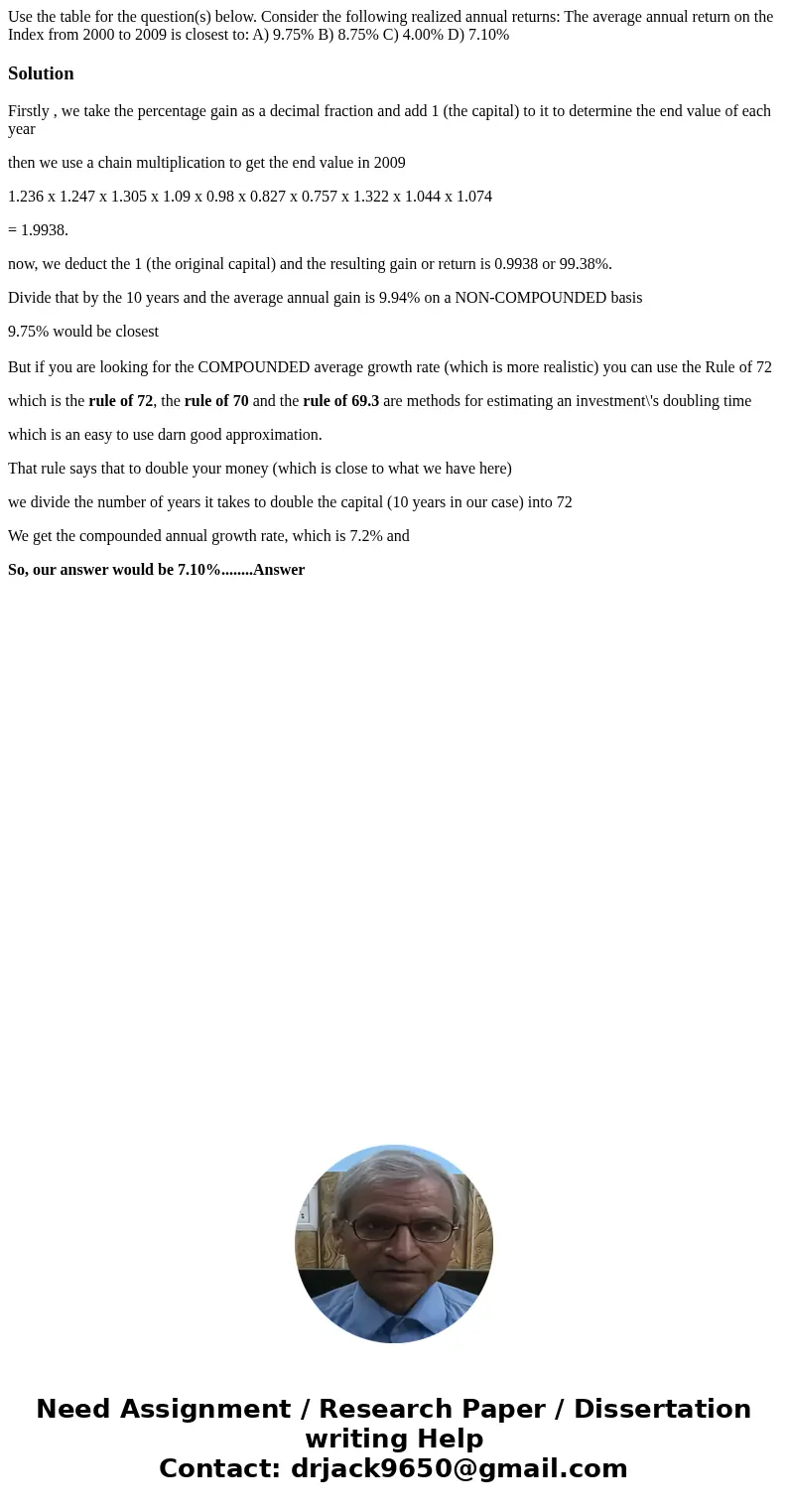Use the table for the questions below Consider the following
Solution
Firstly , we take the percentage gain as a decimal fraction and add 1 (the capital) to it to determine the end value of each year
then we use a chain multiplication to get the end value in 2009
1.236 x 1.247 x 1.305 x 1.09 x 0.98 x 0.827 x 0.757 x 1.322 x 1.044 x 1.074
= 1.9938.
now, we deduct the 1 (the original capital) and the resulting gain or return is 0.9938 or 99.38%.
Divide that by the 10 years and the average annual gain is 9.94% on a NON-COMPOUNDED basis
9.75% would be closest
But if you are looking for the COMPOUNDED average growth rate (which is more realistic) you can use the Rule of 72
which is the rule of 72, the rule of 70 and the rule of 69.3 are methods for estimating an investment\'s doubling time
which is an easy to use darn good approximation.
That rule says that to double your money (which is close to what we have here)
we divide the number of years it takes to double the capital (10 years in our case) into 72
We get the compounded annual growth rate, which is 7.2% and
So, our answer would be 7.10%........Answer

 Homework Sourse
Homework Sourse